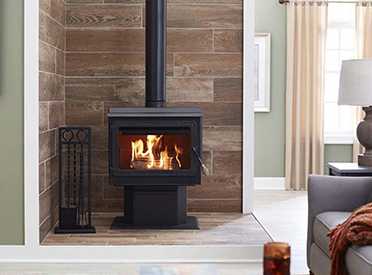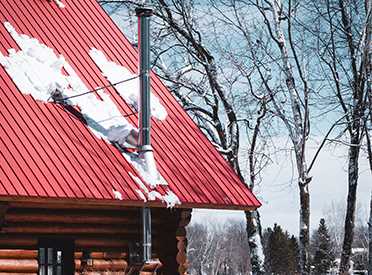Wood: a carbon neutral heating source
When oil, gas, and coal are burned, the carbon they contain is oxidized to carbon dioxide (CO2), the main greenhouse gas. In effect, the combustion of fossil fuels releases ancient carbon (carbon that has been buried within the earth for thousands of years), thereby increasing the atmospheric concentration of carbon dioxide (CO2). In comparison, wood combustion can be considered carbon neutral because trees absorb CO2 as they grow. This process is called carbon sequestration.
When trees mature, die, fall in the forest and decompose, the same amount of carbon is emitted as would be released if they were burned for heat. This cycle can be repeated forever without increasing atmospheric carbon. A healthy forest is not a museum, but a living community of plants and animals. When trees are used for energy, a part of the forests carbon "bank" is diverted from the natural decay and forest cycle into our homes to heat them.
When we heat with wood, we are simply tapping into the natural carbon cycle in which CO2 flows from the atmosphere to the forest and back. The key to ecologically sound and sustainable wood energy use is to ensure that the forest remains healthy, maintains a stable level of variously aged trees and provides a good habitat for a diversity of other species, both plants and animals. Ensuring there is a healthy fuelwood market is key to a sustainable forestry plan. Landowners have more incentive to remove low value trees and manage their forests sustainably knowing there is a market for this low value material.
The combustion of wood produces small particles that are called PM2.5. Those particles are 30 times smaller than a human hair. They can aggravate certain lung and heart diseases and have inked with health problems such as asthma. Sources of PM2.5 include combustion under various forms, such as the one used for cars and trucks, wood heating, as well are other industrial processes. While it is true that old technology like open fireplaces and simple heaters could not burn the wood completely, the new generation of wood-burning appliances are designed to burn particles. They produce almost no visible smoke.
Wood, when burned in an appliance that has been tested to the EPA or CSA B415.1-10 standards, emits up to 80% less particles. It is a clean, renewable energy source. Furthermore, the reduction in fuelwood consumption reaches up to 30% when advanced wood combustion systems are used. This is because certified wood stoves and fireplaces are 60% to 80% efficient, compared with 40% to 60% for conventional units. As for appliances burning wood pellets, they have amongst the lowest particulate emissions of all solid-fuel burning appliances. They are manufactured from waste products and other renewable resources right here in North America. They represent a huge source of heating fuel from material that would otherwise be sent to landfills.

